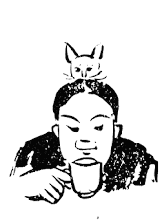The Guilty Desire to Appear Innocent: Colonial Imagination
Franco Moretti, Atlas of the European novel: 1800-1900 (London: Verso, 1998).
Penetrate; seize; leave (and if needed, destroy). It’s the spatial logic of colonialism; duplicated, and ‘naturalized’, by the spatial logic of the one-dimensional plot. And then, at the end of the journey (with the exception of Heart of Darkness), we don’t find raw materials, or ivory, or human beings to be enslaved. In lieu of these prosaic realities, a fairy-tale entity—a ‘treasure’—where the bloody profits of the colonial adventure are sublimated into an aesthetic, almost self-referential object: glittering, clean stones: diamonds, if possible (as in King Solomon’s Mines). Or else, an enigmatic lover: a sort of jungle Dracula, who in two very popular texts (She, Atlantide) is actually a supernatural being. Or again, and most typically, at the end of the journey lies the figure of the Lost European, who retrospectively justifies the entire story as a case of legitimate defense. The Congo, the Haggar, central Africa, the land of the Zulus, the Sahara outposts: in this continent teeming with white prisoners that long to be freed, Western conquest can be rewritten as a genuine liberation, with a reversal of roles (a ‘rhetoric of innocence’, I have called it in Modern Epic) this is possibly the greatest trick of the colonial imagination. [End Page 62]
And innocence—that is, the guilty desire to appear innocent—is what comes to mind in front of figure 29. I found it by chance, in an issue of the Journal of Geography for the year 1974 (nineteen-seventy-four), in an article entitled ‘A Game of European Colonization in


没有评论:
发表评论